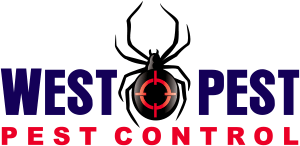Other Pests
Clothes Moths
Clothes Moths are frequently encountered in coastal regions and are widely known for the damage they may cause to woollens, fur, felts and other materials of animal origin.
Clothing affected by clothes moths should be washed or wrapping in black plastic and left in the sun for a few hours. Chemical treatments should be applied to clothing storage areas.
Earwigs
Earwigs are mostly nocturnal and favour damp, confined spaces outside your home.
Ocassionally earwigs invade the home but are not considered nasty pests. Heavy infestations can occur and are easily treated with a chemical spray.
Flies
Flies transmit more than 65 pathogenic organisms. Usually breeding away from kitchens in garbage dumps they present a bit problem to human health during daylight hours when more foods are exposed and handled. Quick disposal of garbage and waste is important in fly control.
Millipedes
Millipedes generally feed on organic matter, usually vegetable. Although not harmful to humans they can occur in plague numbers, invading houses, contaminating food and infesting carpet and bedding. When disturbed they can release a pungent yellowish secretion that may stain skin or clothing and irritate if rubbed into eyes.
Moths
Seasonal bogong moths are obvious to everybody but may also be indicative of an infesation of carpet beetle or case making clothes moths. For the latter expert advice is needed.
Scorpions
Scorpions are usually not dangerous in Australia, however they should be regarded as potentially toxic until the species is identified by an qualified pest technician. Prefering to live in the garden, wood piles and tanbark, they are usually bought into the home on wood for the fireplace.
Silverfish
Silverfish prefer to live in dark quiet places and are most active during the night, prefering to eat paper, fabric, glues and other organic materials, and also most types of human food. Silverfish are often bought into the home in second-hand books and papers.
Slaters
Slaters are usually nocturnal feeding on decaying vegetable matter or young plants. They are often found in wet areas of homes as they depend on moisture to keep the oxygen-absorbing gills under their bodies moist.
Springtails
Springtails (Collembola) are one of the main biological agents responsible for the control and dissemination of soil microorganisms. Springtails are a wingless insect that range in length from 1 to 10 mm. Found in all types of soil and leaf litter, they thrive in moist, dark places and feed on decaying plant matter and fungi. When found outside they serve as an important part of the ecological system and cause no harm to plants. When found inside, they flock to bathrooms, crawl spaces and soil of potted plants.
To deter Springtails from invading inside your home, keep mulch and compost piles away from the house as the moisture and dead plant matter attract them.
Borer
Borers are the larvae of various species of wood eating beetle and can damage timber flooring and internal woodwork in your home. There are many species of beetles of the larvae or adult forms eat and destroy wood. Treatment can be by chemical spray or directly to the infected area.
